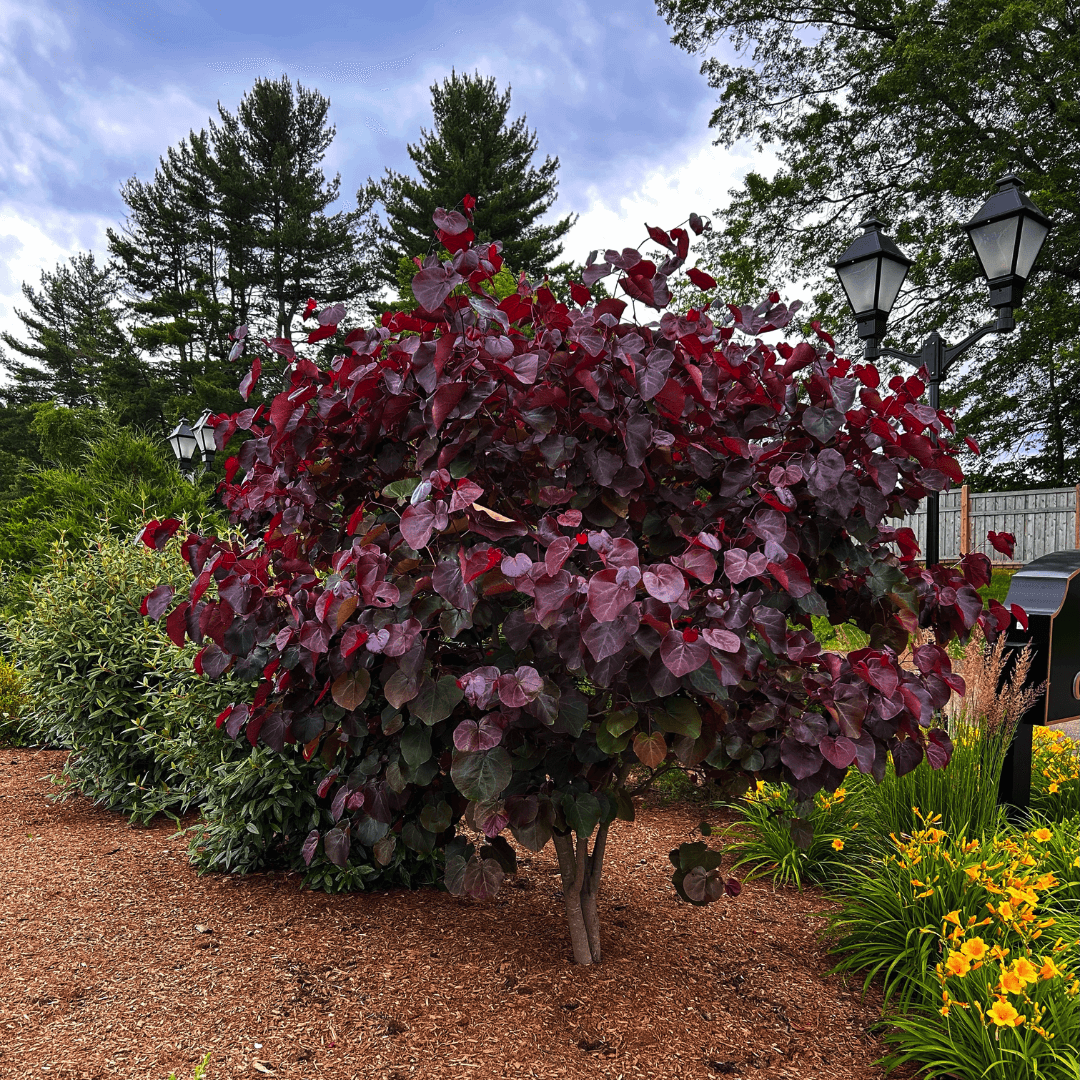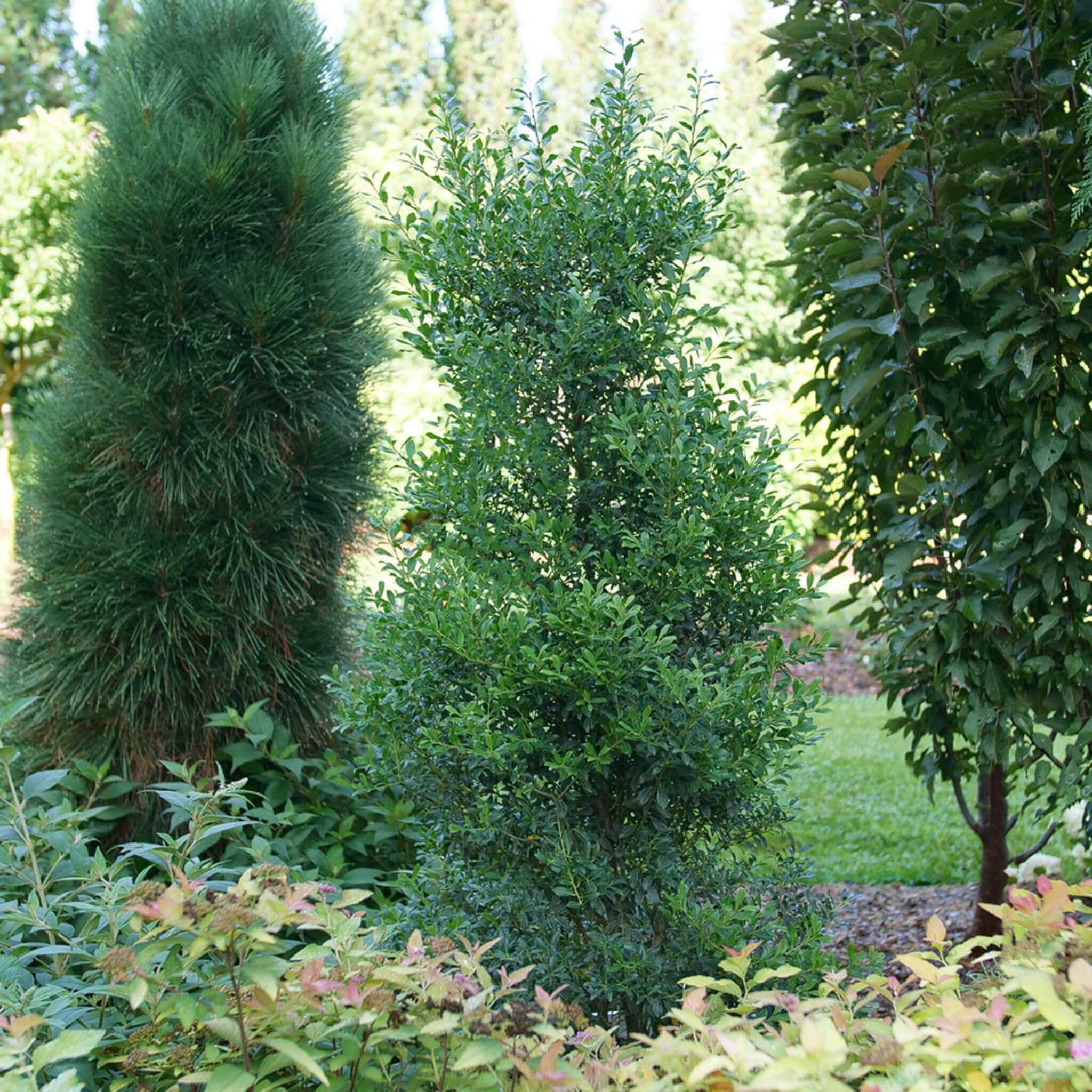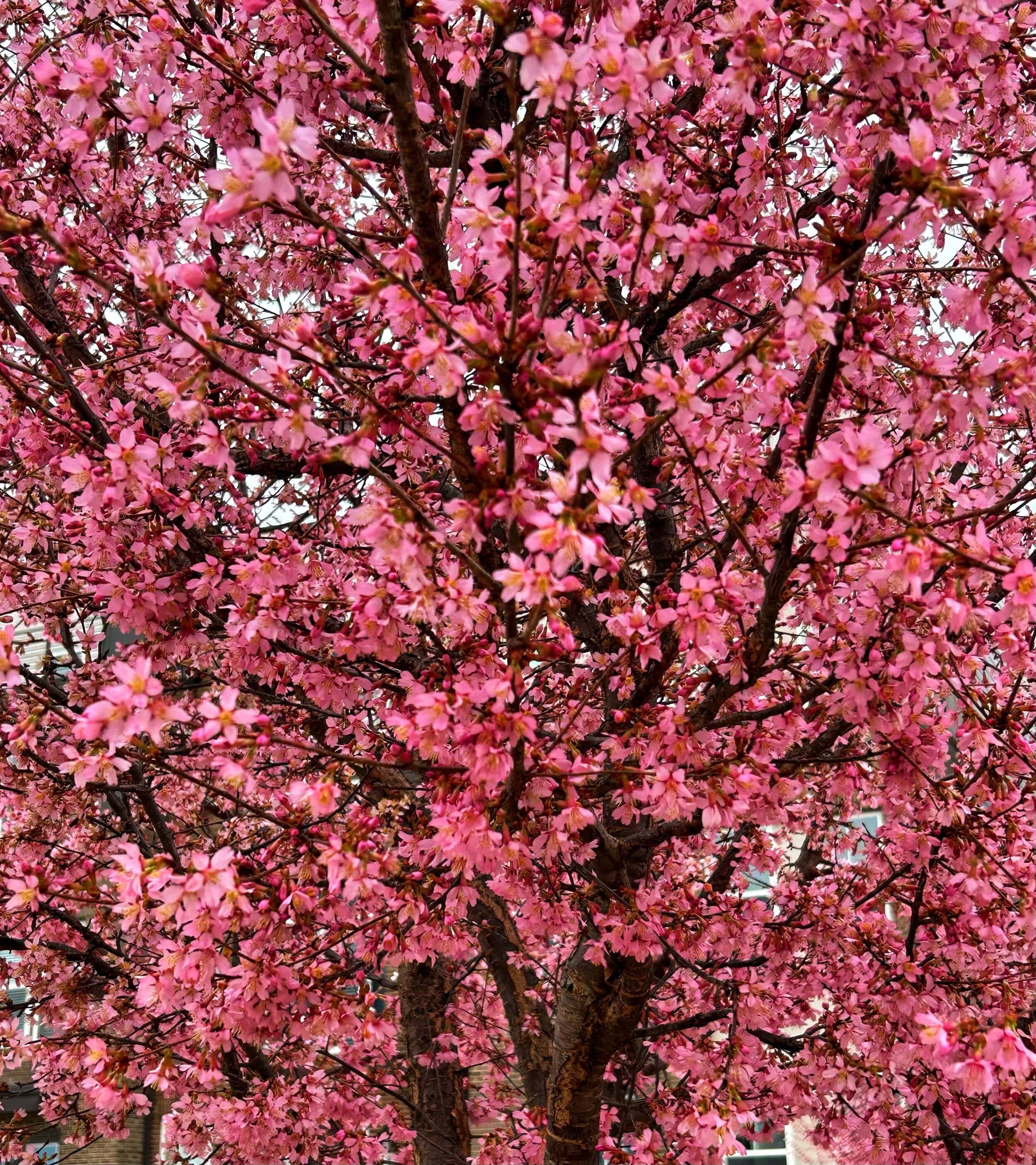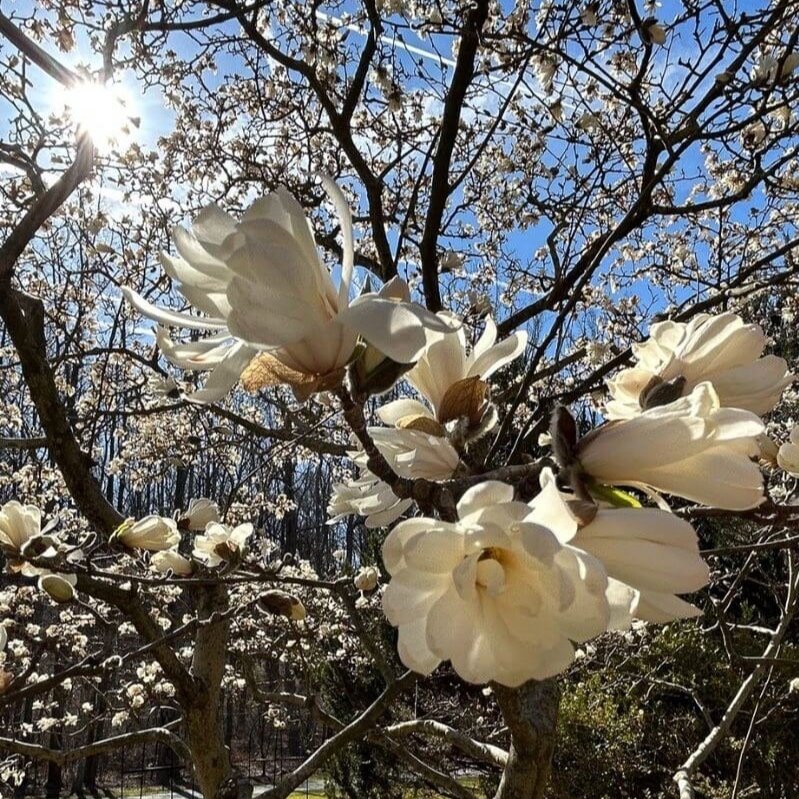The Rising Sun™ Redbud: Stunning Multicolored Foliage
A Small Spring Blooming Tree for Zones 5-9
The Rising Sun™ redbud (Cercis canadensis 'JN2') is a popular ornamental small flowering tree, grown for its vibrant spring flowers and striking, multicolored foliage.
It is a cultivar of the Eastern redbud, a graceful spring flowering tree native to North America. Like other redbuds, The Rising Sun™ produces small, pea-shaped clusters of lavender purple flowers which appear on the branches before the tree leafs out.
These vibrant flowers attract bees, butterflies and other pollinators, making this the perfect spring blooming tree for a pollinator garden.
After flowering, the leaves of The Rising Sun™ redbud emerge in shades of apricot, coral, and orange, resembling the colors of a sunrise.
As the season progresses, leaves turn shades of yellow and lime green, creating a stunning multicolored effect. Fall color is a vibrant orange and yellow, and seed pods appear on the tree that may persist through the winter time, providing food for the birds.
This spring blooming tree is known for its adaptability and can thrive in a variety of soil types, including well-drained and loamy soils.
It prefers full sun to partial shade conditions and is hardy in gardening zones 5 to 9. The Rising Sun™ redbud grows as a small to medium-sized tree, reaching a height of around 10 to 12 feet, with a similar spread.
It has an overall rounded or vase-shaped habit. As with all trees, help a newly planted redbud establish a healthy and complex root system by providing regular, deep waterings for the first two years after planting (learn more about watering your plants here).
The Rising Sun™ redbud is a small flowering tree with unique foliage.
How Do I Care For The Rising Sun™ Redbud?
Planting Location: Choose a spot with full sun to partial shade. As one of the most beautiful small flowering trees, the Rising Sun™ redbud thrives in moist, well-draining soil and will tolerate a wide range of soil types, including acidic, alkaline and clay.
Watering: Keep the soil consistently moist, especially during the first two years after planting. Regular watering is essential for young spring blooming trees, particularly during dry spells. Are you experiencing a drought? Check the U.S. Drought Monitor.
Mulching: Apply a 2-3 inch layer of mulch around the base of the tree. This helps to retain soil moisture, regulate soil temperatures, and prevent weeds. Make sure the mulch does not touch the base of the tree; avoid creating a “mulch volcano”.
Pruning and fertilizing: The Rising Sun™ redbud tree will naturally grow into a beautiful shape and requires little pruning - remove any dead or damaged branches as needed. If desired, prune and shape in late winter while the tree is dormant. Redbuds do not require fertilizing but can benefit from an annual application of compost or leaf mold. Protect your investment and consider developing a routine of hiring an arborist who can expertly provide care and address potential issues promptly.
Pest and Disease Control: The Rising Sun™ redbud is generally pest and disease resistant, but may occasionally suffer from problems like as canker and leaf spot. Proper cultural practices, including adequate moisture, can help to prevent issues from occurring.
The lavender pink buds of the redbud tree get ready to burst open in spring.
Where to Plant The Rising Sun™ Redbud Tree
Accent or Specimen Tree: Plant as a focal point in your garden or landscape where its spring flowers and vibrant, multi-colored foliage can be fully appreciated. Position in front of evergreens or darker foliage plants to create a striking color contrast.
Mixed Borders: Ideal for adding height and visual interest to mixed borders, especially in combination with other small flowering trees or shrubs. Use it to create a layered effect in perennial borders, with shorter plants in front.
Mixed Privacy Screens: Incorporate into a mixed privacy screen, where its compact size and colorful foliage can soften the appearance of taller, denser plants. Pair with evergreens or other spring blooming trees.
Woodland Edge: Plant this small flowering tree at the edge of a woodland garden, where it can transition from forest to open space. The Rising Sun™ works well in dappled shade, thriving alongside other native trees and understory plants.
Pollinator Garden: Use in a pollinator-friendly garden, where its early spring blooms provide nectar for bees and other pollinators. Combine with other nectar-rich, small flowering trees, shrubs and perennials to create a continuous food source for pollinators throughout the growing season.
Street Tree: The Rising Sun™ is suitable for planting as a street tree in areas with limited space, particularly where overhead utility lines are present. Its small, compact size makes it ideal for urban settings.
Small Urban Gardens: This small flowering tree is perfect for planting in small urban gardens or courtyards, where its compact shape won’t overwhelm the space.
Containers: The Rising Sun™ is small enough to plant in a container or raised bed, where it can add height and color to patios or paved areas.
Entryways and Pathways: Use near entryways or along pathways to create a welcoming and colorful entrance to your home or garden. The tree’s vibrant colors and compact form make it an attractive choice for framing doorways or lining walkways.
Planting Companions
When picking neighboring plants for this striking redbud tree, less is more - let the foliage and unique colors of The Rising Sun™ redbud be the star of your garden!
Pair with dark green glossy evergreens like Otto Luykens cherry laurels (Prunus laurocerasus ‘Otto Luykens’) or Schip laurels (Prunus laurocerasus ‘Schipkaensis’).
Underplant with Japanese Plum Yews (Cephalotaxus harringtonia ‘Prostrata’) or sweet box (Sarcococca hookeriana var. humilis).
Plant in front of a row of Emerald Green or Green Giant arborvitae (Thuja) to create a striking color contrast.
Is The Rising Sun™ Redbud Tree Messy?
The Rising Sun™ redbud trees do produce some natural debris, but are not considered to be particularly messy. Each season, redbud trees produce seedpods which persist on the tree through autumn - most are blown away by the wind or eaten by birds and squirrels.
A few volunteer seedlings may sprout and grow, and these can easily be pulled out or mown down before getting too big. Like other deciduous trees, redbuds shed their leaves in the fall. During routine fall cleanups, gathering these leaves can be easily accomplished by using a rake or leaf blower.
The multicolored leaves of The Rising Sun™ redbud tree.
Is The Rising Sun™ Redbud Tree Deer Resistant?
The Rising Sun™ redbud trees are not considered to be deer-resistant, and in fact, Rutgers University rates them as "occasionally severely damaged" by deer on their list of “Landscape Plants Rated by Deer Resistance”.
This means that deer will browse on redbuds, particularly on young trees and tender shoots, which can lead to significant damage or even stunt the tree's growth. 😞
If you're planting in an area with a large deer population and would like to plant spring blooming trees, it may be wiser to choose something more deer-resistant like a serviceberry (Amelanchier species).
Serviceberries are small flowering trees with beautiful blooms and edible berries. They are less appealing to deer, making them a better choice for landscapes where deer pressure is a concern.
Find a Tree for Your Landscape:























Create a Winter Wonderland with This Unique Small Tree